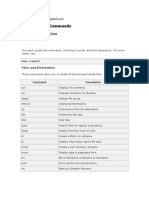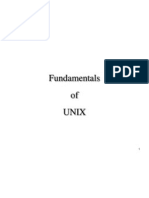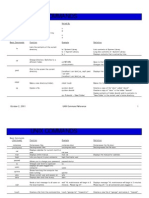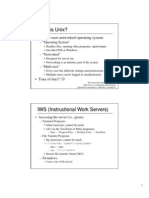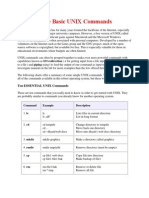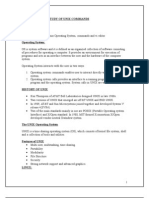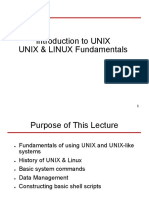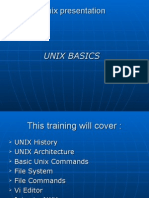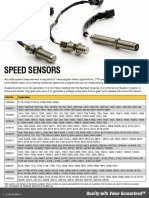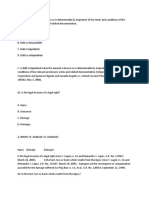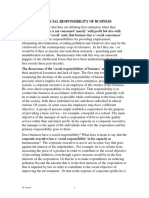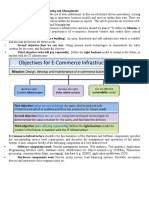0% found this document useful (0 votes)
9 views6 pagesUtility of UNIXLINUX Command
Unix commands are essential for interacting with the Unix operating system, which supports multi-user and multi-tasking capabilities. The document outlines various Unix commands for file management, process management, text processing, network communication, and system administration, along with examples for each command. Additionally, it introduces popular text editors like Vi, Emacs, and Nano used in Unix environments.
Uploaded by
BappadityaBanerjeeCopyright
© © All Rights Reserved
We take content rights seriously. If you suspect this is your content, claim it here.
Available Formats
Download as DOCX, PDF, TXT or read online on Scribd
0% found this document useful (0 votes)
9 views6 pagesUtility of UNIXLINUX Command
Unix commands are essential for interacting with the Unix operating system, which supports multi-user and multi-tasking capabilities. The document outlines various Unix commands for file management, process management, text processing, network communication, and system administration, along with examples for each command. Additionally, it introduces popular text editors like Vi, Emacs, and Nano used in Unix environments.
Uploaded by
BappadityaBanerjeeCopyright
© © All Rights Reserved
We take content rights seriously. If you suspect this is your content, claim it here.
Available Formats
Download as DOCX, PDF, TXT or read online on Scribd
/ 6




